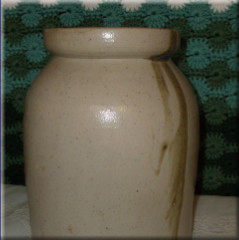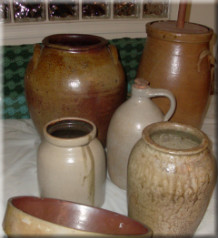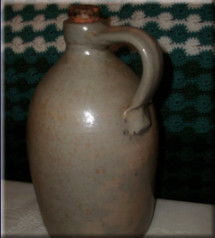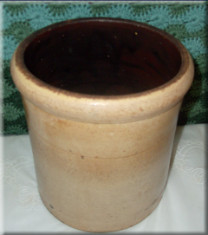Contact Us | Donations & Comments | Our store
WILSON POTTERY FOUNDATION
The Descendants of Hiram, James, and Wallace Wilson Historical Foundation DBA Wilson Pottery Foundation
Wilson Pottery Foundation
STONE WARE OF THE WILSON POTTERS
The Wilson Potters began their production of stoneware during the mid Nineteenth Century. There were three Wilson Potteries located in the Capote Hills of Guadalupe County on the outskirts of Seguin, Texas. These potteries were located near an abundance of clay suited for the making of stoneware. Stoneware was the basic utilitarian ware of the Nineteenth Century and these stoneware containers served many useful functions. They were primarily used as containers for the preparation and storage of food as well as serving food. Other needs also were satisfied by use of stoneware. For example items such as flowerpots, churns, jars and jugs. Some marbles have also been unearthed at the abandoned kilns of these potters.
The shape of the Wilson stoneware was the classical ovoid shape. This is evident in the jars, crocks and jugs Though the handles of Wilson Pottery made at the first site displayed crescent shaped tie down lids, pottery at the H. Wilson & Co. (second site) display horseshoe shaped handles with rims that support lid. You will find some pieces of pottery from the second site stamped with the name H. Wilson & Co. that was rare in the southwest during that time. The numbers for the size of the jars were also stamped on the stoneware from all three sites.
Alkaline glaze was used most often at the first site and salt glaze can be found in use most often at the second site and third sites. A salt glaze leaves a shiny and pitted finish, which is referred to as “orange peel.”
The stoneware was shaped by hand on the potter’s wheel. The interior of the stoneware was coated with dark brown slip clay. The freshly shaped vessels were allowed to air-dry before placing in the kiln for firing.
The stoneware was placed on one level strategically so as not to fuse by use of “furniture” a term used by the potters when referring to mall pieces of clay placed between the pieces sot hey would not adhere to the other. A groundhog kiln was most often used by these potters and fired at a very high degree to assure they were well fired which usually took several days. When the heat was at its maximum salt was added by throwing it into the kiln. A brick was removed momentarily for this procedure and then replaced. Salt would vaporize, covering all exposed surfaces.
Usually after two to three days the kiln was cool enough to remove the stoneware and load it on wagons for marketing.
These post slavery potters Hiram & James Wilson have been recognized as the first African American entrepreneurs in Texas. Their pottery is highly desired and collected.
It is the aim of the Wilson Pottery Foundation to establish a museum where the pottery will be preserved for appreciation and study by the public.
If you have Wilson Pottery you would like to donate or would like to offer monetary donations toward the purchase of Wilson Pottery for the museum, please go to the donation area of this web site and respond. All such gifts would be highly appreciated.

© Wilson Pottery Foundation, All Rights Reserved |Login



